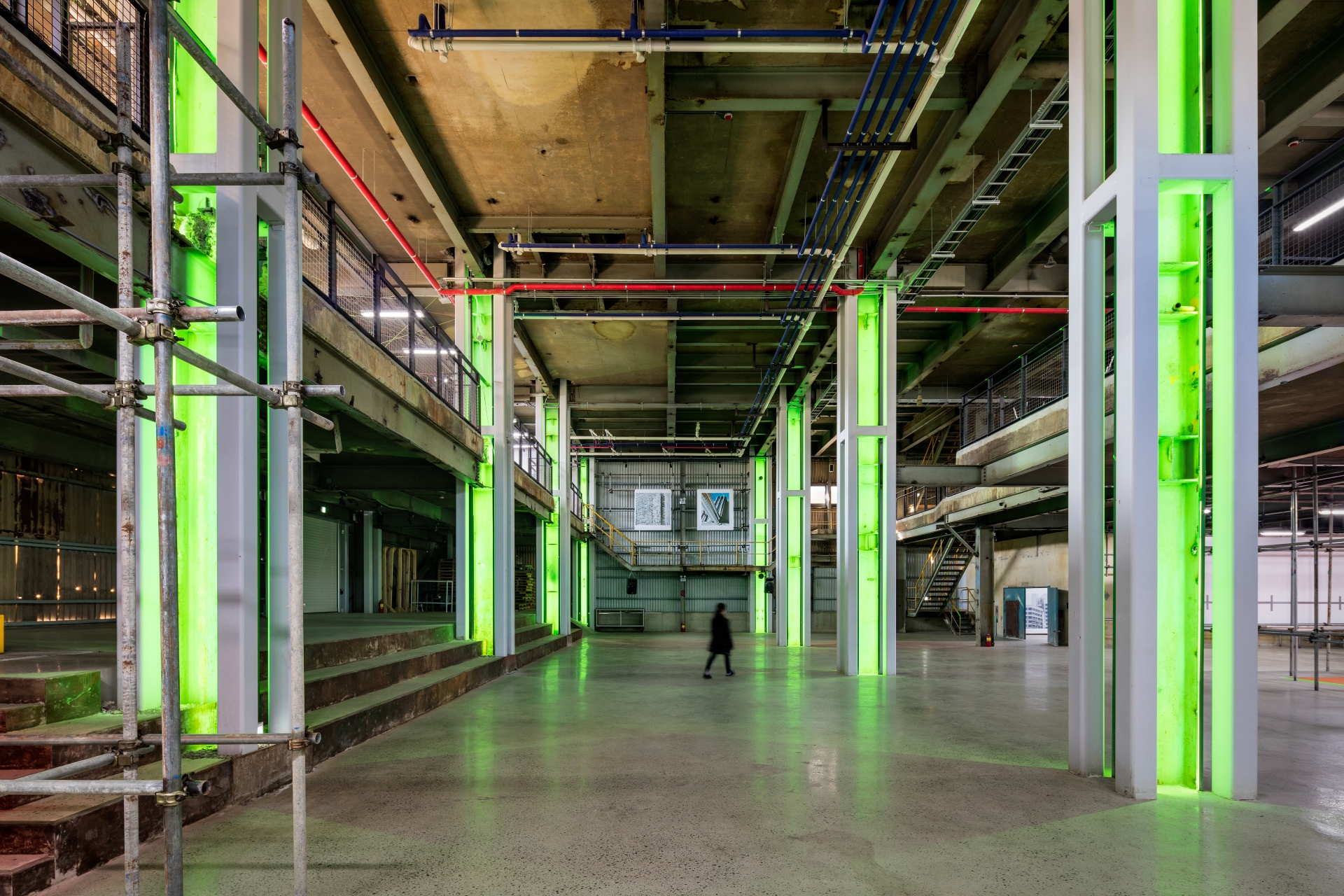In factory regeneration projects, updating the old buildings to meet with current regulations often entails erasing everything that is attractive about the building to introduce new insulation and fire-retardant paint. This conflict can spark the architect’s imagination. If there is a perfect way to separate the old from the new, is it not enough for the extension to comply with current building regulations?
The Cosmo 40 building features an extension in the shape of a continuous ring that has been inserted into a 40-year-old deserted factory building. This ring mainly acts as a central hub for lobbies and circulation which supports creative use of the old factory space. When the extension enters the old factory on the 3rd floor, it is supported by new column bundles placed around the original factory columns. This structural independence liberates the old factory from the burden of meeting with current building codes. As such, the ambience of the old factory remains intact and becomes a background to the extension.
A ground floor with a 10m ceiling height and two mezzanine floors make up the lower level which will host various performances and events. The only new architectural element on the lower level is the column bundles that support the extension. These column bundles act as thick light columns that dictate and instantly change the ambience of the whole space.
The third floor of the old factory is 14m high with some steel grating floors left on the fourth floor. Folding doors running through the entire elevation of the extension allow for connection to or separation from the old factory space. The relationship between the extension and the old factory was intended as a dramatic contrast, creating an interesting juxtaposition between time and the overall vibe.
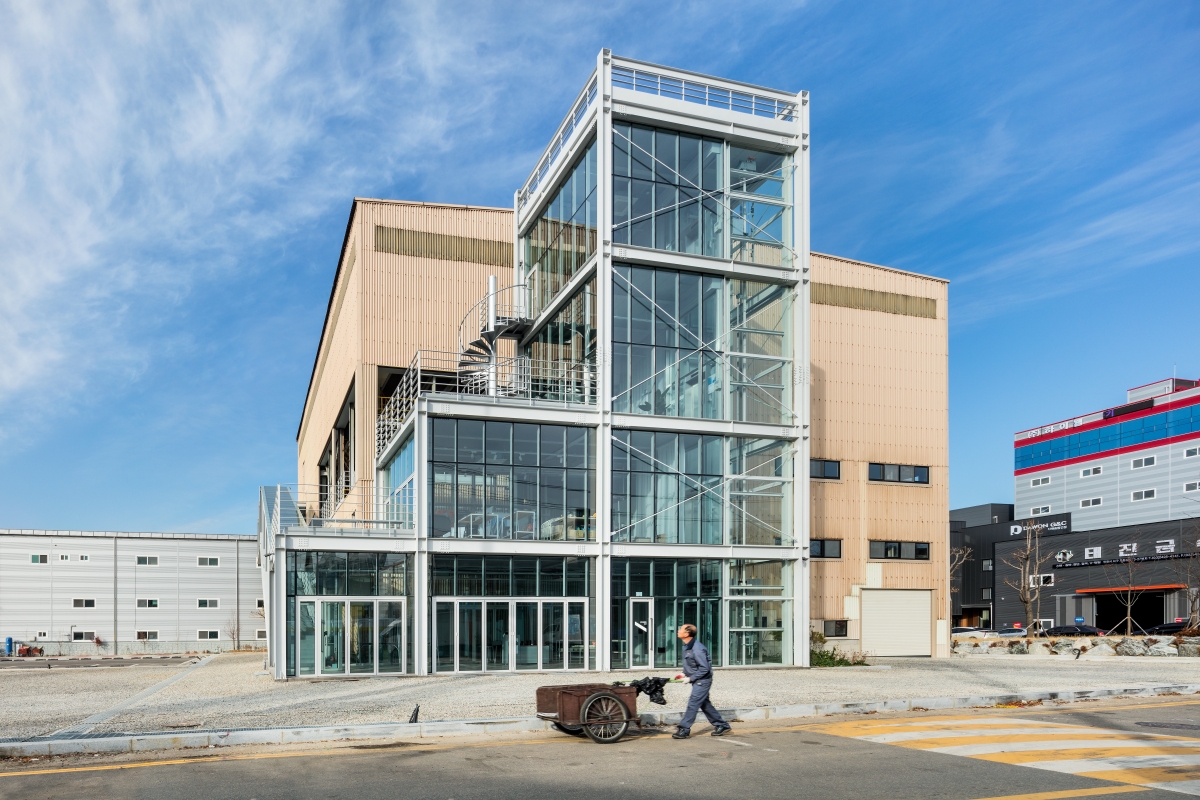
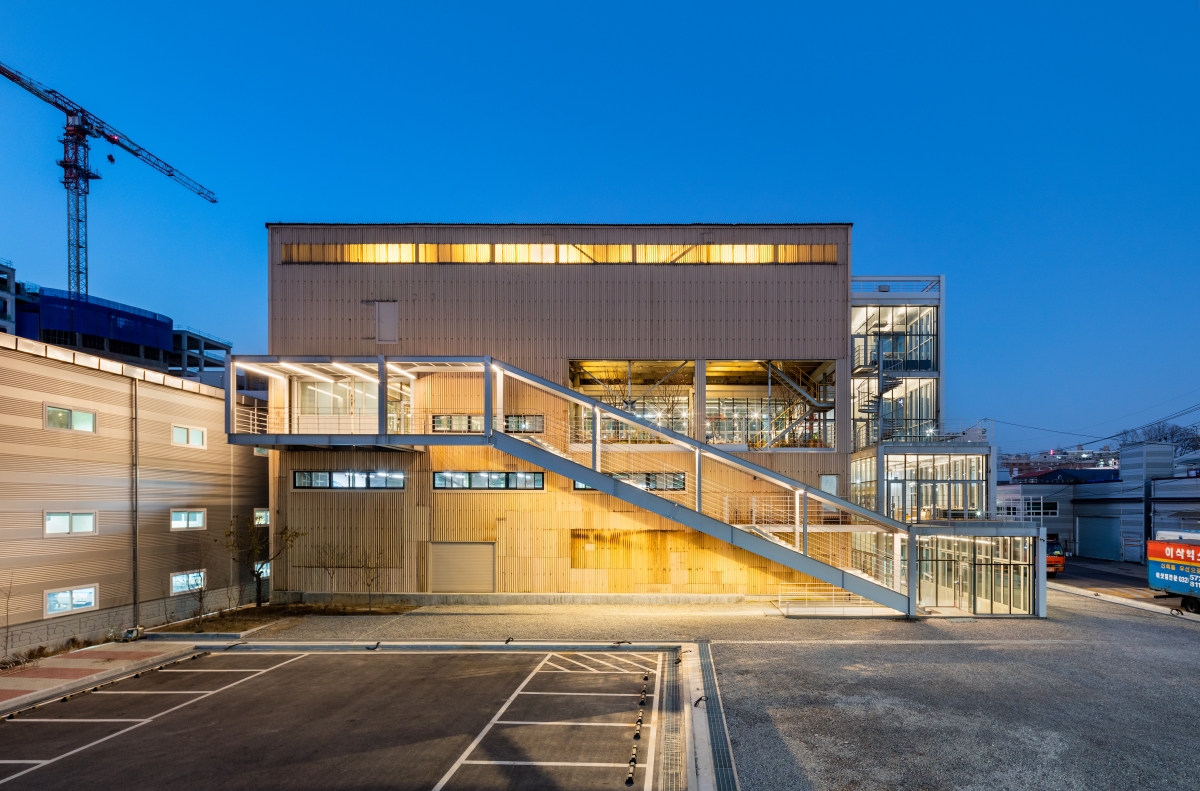
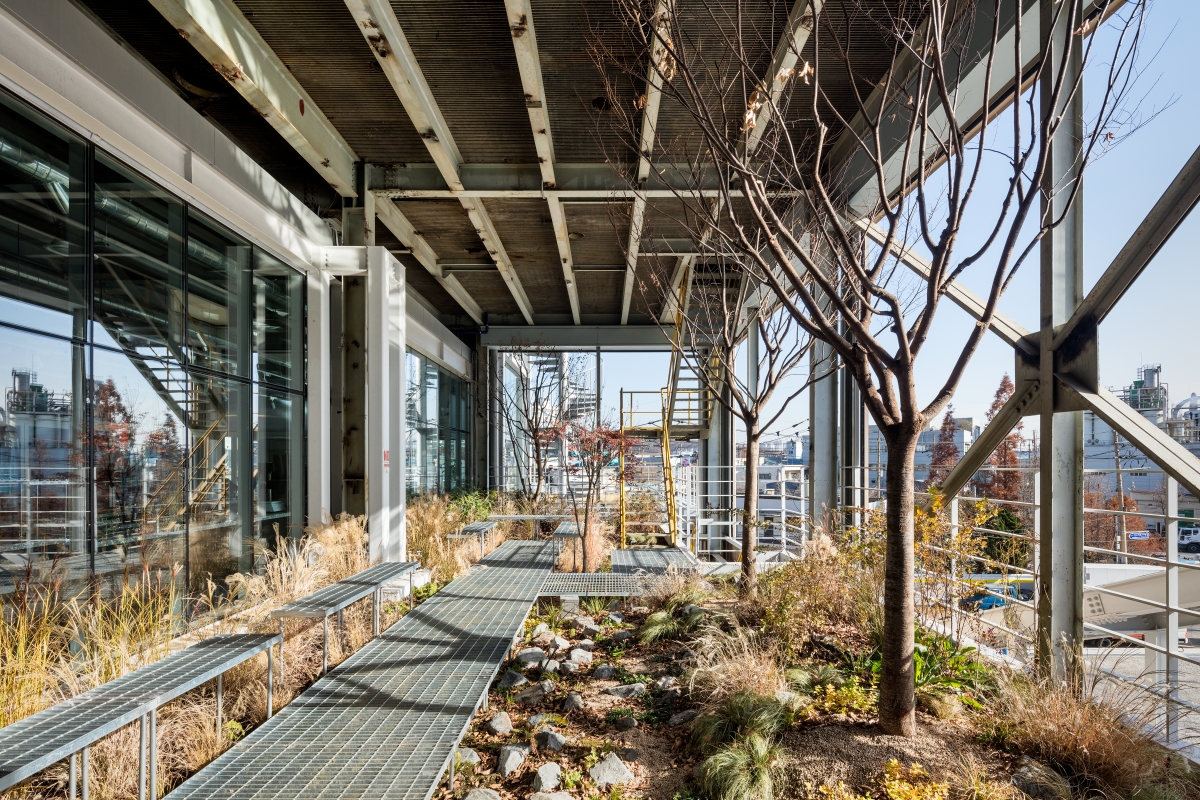
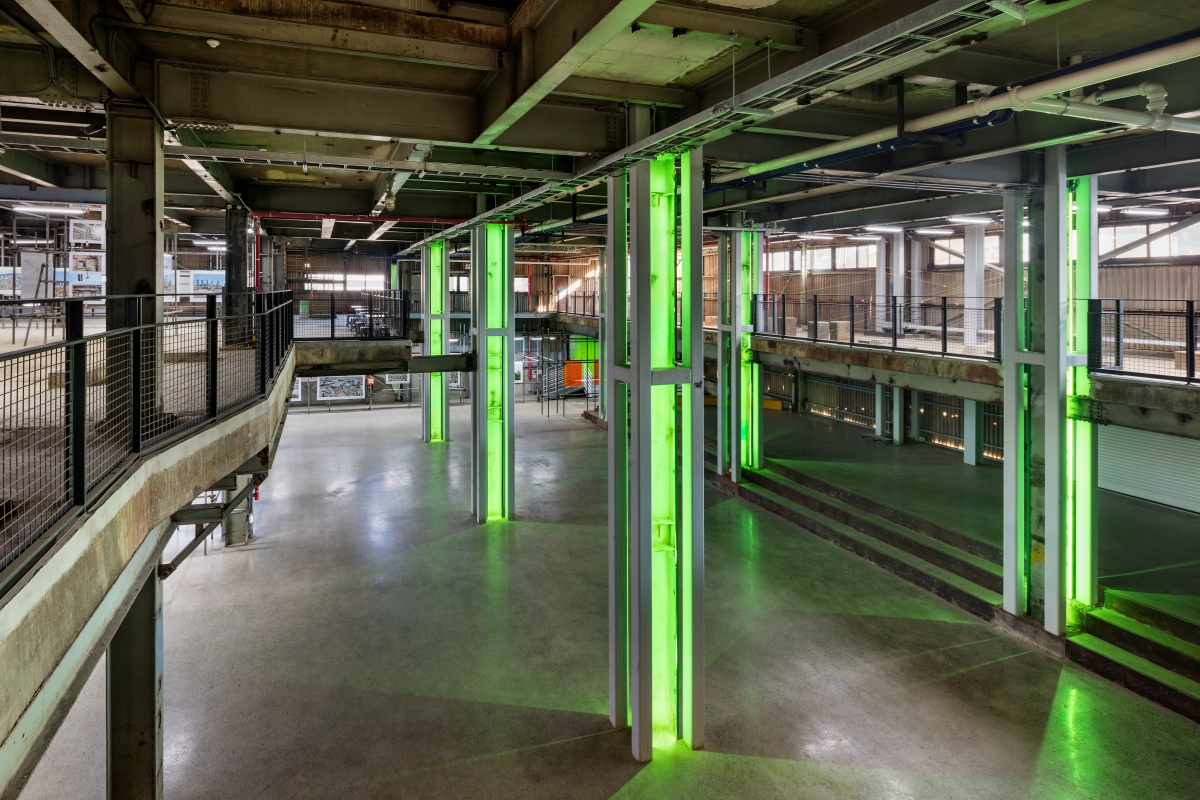
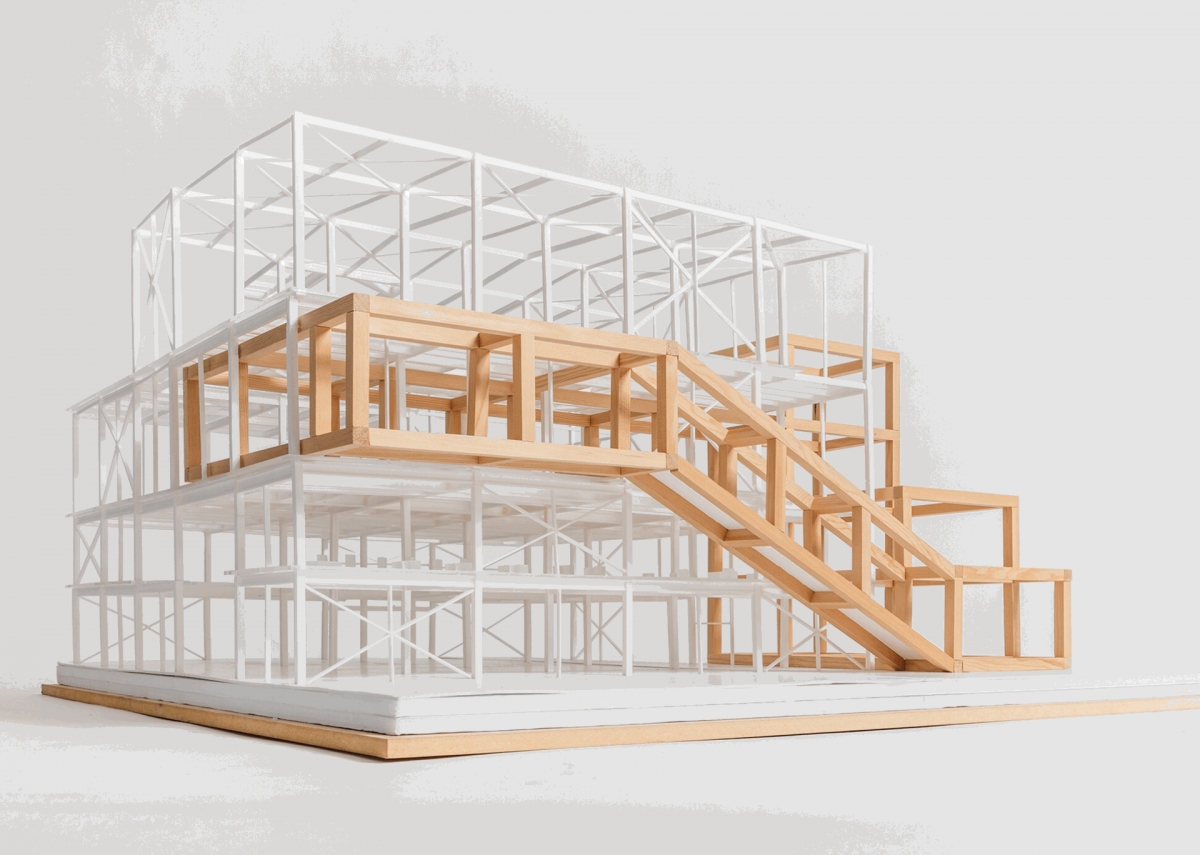
Yang Soo-in
A Seoul-based designer and public artist. His works range from buildings and public artworks to branding and advertising. He has been widely published internationally including The New York Times, International Herald Tribune, MARK and has won Prix Ars Electronica, Red Dot Award and iF Award. He was selected as one of the ‘Modern-Day Leonardos’ from the Chicago museum of Science and Industry in 2006. He was an adjunct assistant professor at Columbia University Graduate School of Architecture, Planning and Preservation (2005 – 2011) where he received Master of Architecture degree with highest honor.
124





